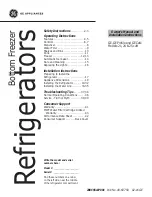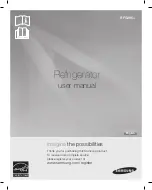
9 Care and maintenance
▪
Do not defrost frozen food at room temperature or on the heating. Food defrosts
slowly in the refrigerator compartment. As a quick alternative, defrost in a microwave
or steam cooker.
8.3
Notes on saving energy
▪
Leave the drawers, glass shelves and door trays as far as possible in the positions
that they were in upon delivery. These ensure ideal temperature distribution and effi-
ciency.
▪
Only open the appliance doors when necessary and keep them open for as short a
time as possible.
▪
Allow hot or warm food to cool down before putting it in the appliance.
▪
Store food that releases moisture in closed containers or covered in the refrigerator
compartment. Moisture reduces the cooling capacity.
▪
For ideal air circulation: Do not store food and food items too close to each other.
9
Care and maintenance
9.1
General cleaning instructions
For the hygienic storage of food, the interior should always be kept clean.
Before cleaning, disconnect the appliance from the mains!
Do not use any abrasive cleaning agents or scouring cloths to clean the appliance.
Take care not to press too hard when cleaning the plastic surfaces.
Do not use acidic or strongly alkaline cleaning agents on metal surfaces. Take
care not to damage the refrigerant circuit.
Risk of damage to the appliance.
▸ Clean the steel surfaces with the microfibre cloth and special sponge supplied with
the appliance. To bring the shine back to the steel, slightly dampen the microfibre
cloth before using it. Please observe the detailed instructions contained in the set sup-
plied.
▸ Always wipe in the direction of the satin finish lines of the steel.
▸ Do not use the sponge on aluminium surfaces such as the handles or glass shelf
trims.
9.2
Cleaning the interior
For the hygienic storage of food, the interior should always be kept clean.
Avoid bringing cold parts made of glass such as the shelves into direct contact
with boiling water! Wash all removable accessories by hand, not in the dish-
washer.
Risk of damage to the appliance or permanent deformation.
▸ Condensation can form in the vegetable drawers and on the glass shelves, depending
on the kind and quantity of food being stored. Regularly wipe away any condensation
with a dry cloth.
30











































